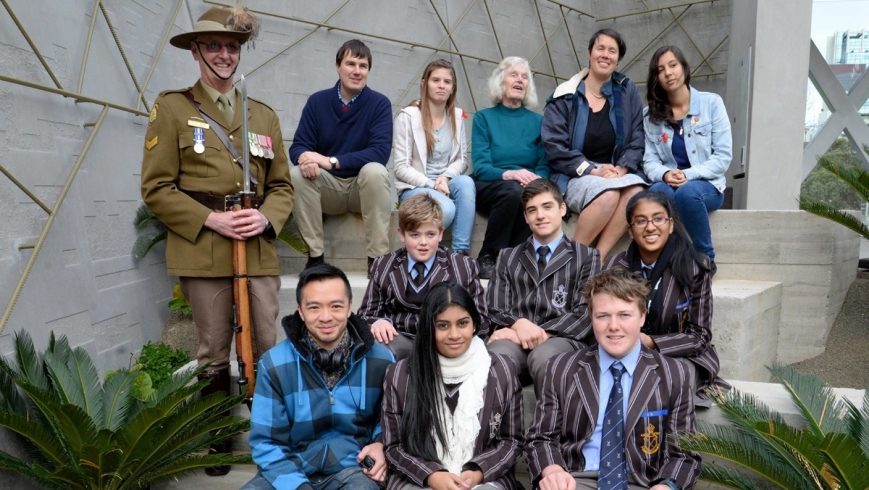The Great War Centenary Committee of Bacchus Marsh (GWCC) welcomed a group of French students to town last month as part of the war’s centenary commemoration.
The students, their mentor and a film crew visited Australia to research and film a documentary about the lost Diggers of Vignacourt.
Their visit followed a recent discovery of the ‘Thuillier collection’ of long-lost photograph negatives of allied soldiers passing through the town of Vignacourt in World War I.
GWCC president Damien Strangio said the images provided an extraordinary insight into the lives of hundreds of young Australians fighting in World War I.
“The discovery has captured the imagination of Australians and French alike,” he said.
He said Vignacourt, a small town behind the lines of the Somme battlefields, was a through-point to the front lines as well as a hospital area and a site for rest and recuperation for tens of thousands of allied soldiers in WW1.
A French photographer is believed to have made a business taking photographs of the soldiers, and 3000 glass plates of these images were found in a Vignacourt barn.
“Of the hundreds and hundreds of Australians photographed, perhaps only 100 have been identified so far,” Mr Strangio said.
“It’s estimated that as many as two-thirds of the Australians photographed subsequently died in action.”
While in Australia, the French students filmed the cenotaph and Lone Pine in the grounds of Bacchus Marsh and Melton Memorial Hospital and toured the Avenue of Honour.
They also met Allison Harcourt, 84, the daughter of WWI Digger Dr Keith McKeddie, and
Faye Threlfall whose grandfather, Walter Spencer, was identified as one of the Diggers photographed.







